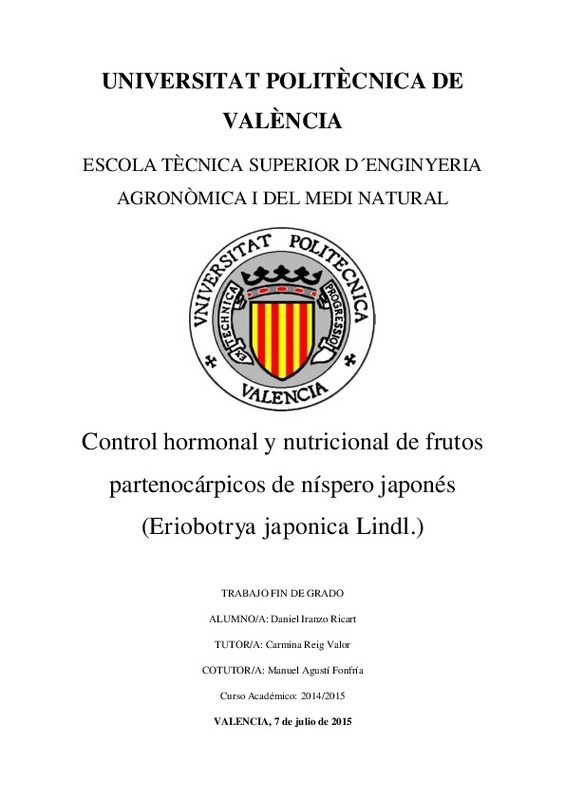JavaScript is disabled for your browser. Some features of this site may not work without it.
Buscar en RiuNet
Listar
Mi cuenta
Estadísticas
Ayuda RiuNet
Admin. UPV
Control hormonal y nutricional de frutos partenocárpicos de níspero japonés (Eriobotrya japonica Lindl.)
Mostrar el registro completo del ítem
Iranzo Ricart, D. (2015). Control hormonal y nutricional de frutos partenocárpicos de níspero japonés (Eriobotrya japonica Lindl.). http://hdl.handle.net/10251/54346.
Por favor, use este identificador para citar o enlazar este ítem: http://hdl.handle.net/10251/54346
Ficheros en el ítem
Metadatos del ítem
| Título: | Control hormonal y nutricional de frutos partenocárpicos de níspero japonés (Eriobotrya japonica Lindl.) | |||
| Autor: | Iranzo Ricart, Daniel | |||
| Director(es): | ||||
| Entidad UPV: |
|
|||
| Fecha acto/lectura: |
|
|||
| Resumen: |
[EN] The asexual flower set in the loquat is a rare phenomenon. However, in some cases,
depending mainly on the low temperatures during filling, aspermos fruits appear. This
phenomenon exists in many fruit species and ...[+]
[ES] El cuajado asexual en el níspero japonés es un fenómeno poco común. No obstante, existen cultivares poliploides con capacidad partenocárpica, y en algunas ocasiones, dependiendo fundamentalmente de las bajas temperaturas ...[+]
|
|||
| Palabras clave: |
|
|||
| Derechos de uso: | Reconocimiento - No comercial - Sin obra derivada (by-nc-nd) | |||
| Editorial: |
|
|||
| Titulación: |
|
|||
| Tipo: |
|
recommendations
Este ítem aparece en la(s) siguiente(s) colección(ones)
-
ETSIAMN - Trabajos académicos [3541]
Escuela Técnica Superior de Ingeniería Agronómica y del Medio Natural







